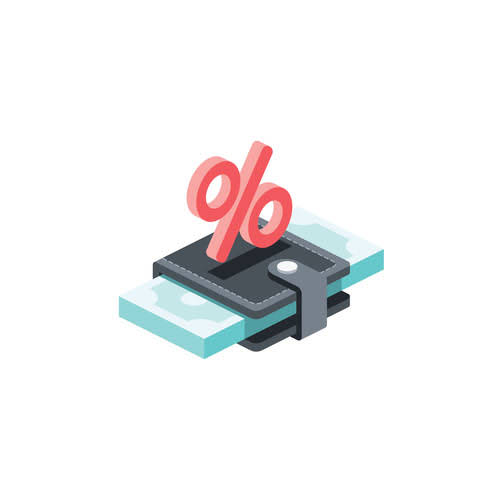What Is an Electronic Funds Transfer?

ATMs are an electronic funds transfer that lets account holders access funds remotely without teller services. These machines allow EFT payment processing at ATM stations or branch banks. Transactions include cash deposits and withdrawals and the transfer of funds. An EFT payment describes a generic digital activity that defines several types of electronic payments. These payments include automated clearing house (ACH) transfers from banks and wire transfers. EFT presents a helpful solution for sending dependable and quick payments on time.

Versatile Payment System
- With so many acronyms in the banking industry, keeping them all straight can be a tedious process.
- For example, using your debit card while checking out at a restaurant initiates an EFT from you to the restaurant.
- EFT payments are frequently used in place of paper-based payment methods—like checks and cash—to make transactions faster and safer.
- Department of the Treasury and the Social Security Administration (SSA).
- Instead of receiving a monthly physical check, this EFT payment method electronically deposits your payroll funds into your bank account.
- Many banks and payroll services offer user-friendly interfaces to manage direct deposit transactions.
- Some apps allow you to connect your credit card (usually for a charge per transaction).
Since most banks are EFT-enabled, the process of transferring funds to any corner of the country electronic funds transfer has now become hassle-free. In simplest terms, an ACH transfer is basically a type of EFT used by various industries for security purposes and low fees. In fact, it was originally designed to replace the use of physical checks. Direct Deposit of payroll in an employee’s bank account is another type of EFT, using ACH. Learn how to expertly execute global payments for streamlined accounts payable and business efficiency.
How Do Electronic Funds Transfers Work for International Payments?
The sender may be solely held responsible for losses if the incorrect email or number is entered and money is mistakenly sent to the wrong person. This is a process that converts paper checks into electronic payments. It works because a digital check gets generated after being authorized by the person making the payment or purchase. This can be done in a store or after a company receives your check Legal E-Billing by mail. Being able to handle banking tasks straight from the comfort of your home is a reality thanks to online banking.
Find The Best Ways To Send Money Internationally
ACH transactions happen on an electronic funds transfer network called the Automated Clearing House. All ACH payments are EFT payments, but not all EFT payments are ACH payments. An ACH payment must pass through the Automated Clearing House network. Introduced in 1990 by the Reserve Bank of India (RBI), Electronic Fund Transfer (EFT) is the transfer of funds via electronic channels. EFT allows intra-bank and inter-bank transfers in a time-saving and cost-effective manner. Today, payroll EFT has been replaced by a more efficient payment system – the National Electronic Fund Transfer, widely known as NEFT.

Pros and Cons of EFT Payments

This convenient option eliminates the need for physical checks, reducing administrative costs and ensuring timely payments. However, EFT is a broad term that encompasses various types of transactions. The kinds of transactions that fall under the EFT umbrella are vast, ranging from direct deposits of salaries to online payments for goods and services. This allows you to authorize specific deposits into your bank account, including paychecks, Social Security checks, or other benefits. You can also preauthorize automatic withdrawals directly from your bank account for recurring expenses such as auto insurance, mortgage payments, and utility bills. As EFT continues to evolve, it is important for individuals and businesses to stay informed about the latest advancements, security best practices, and available services and platforms.
- EFT works by using computer systems to transfer money between two bank accounts.
- In this article, we’ll share everything you need to know about EFT payments, from what they are to how they work.
- Businesses can link their bank accounts, credit cards, or merchant accounts to mobile payment apps like PayPal, Venmo, or Apple Pay, facilitating quick and secure transactions.
- Reconciliation includes checking bank statements for accuracy and resolving any discrepancies with the financial institution.
- EFT, meaning electronic funds transfer, refers to a method of sending digital transfers.
- By removing the need for paper-based transactions, human errors, such as incorrect account numbers or handwriting misinterpretation, are significantly reduced.
Step 4: Processing by Financial Institutions (Banks)

One of the key aspects of EFT is the speed at which transactions are processed. Unlike traditional payment methods that may take days to clear, EFT transactions are usually completed within hours or even minutes. This quick turnaround time makes EFT highly suitable for time-sensitive transactions and payments. By the end, you’ll have a comprehensive understanding of what EFT means in banking and how it has transformed the way we handle financial transactions. What sets the ACH network apart is that it facilitates payments in batches three times daily.

Peer-to-Peer Payment Apps
Whether you’re making recurring payments, conducting online shopping, or managing payroll, understanding the basics of EFT is essential in today’s digital economy. An electronic funds transfer (EFT) is a way to move money across an online network, between banks and people. EFT payments are frequently used in place of paper-based payment methods—like checks and cash—to make transactions faster and safer. In contrast, electronic funds transfer (EFT) includes many kinds of online fund transfers besides wire transfers, including less expensive ACH bank transfers in the United States. Peer-to-peer payments are electronic funds transfers (EFTs) made through mobile apps or the Internet to transfer money electronically between them. Examples of peer-to-peer payment systems include PayPal, Venmo, Zelle, Apple Cash, and eWallet apps where both parties (the payer and payee receiver) have accounts.

No Comments